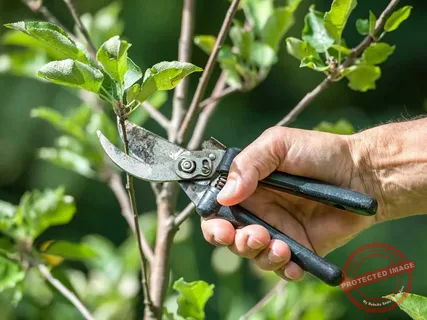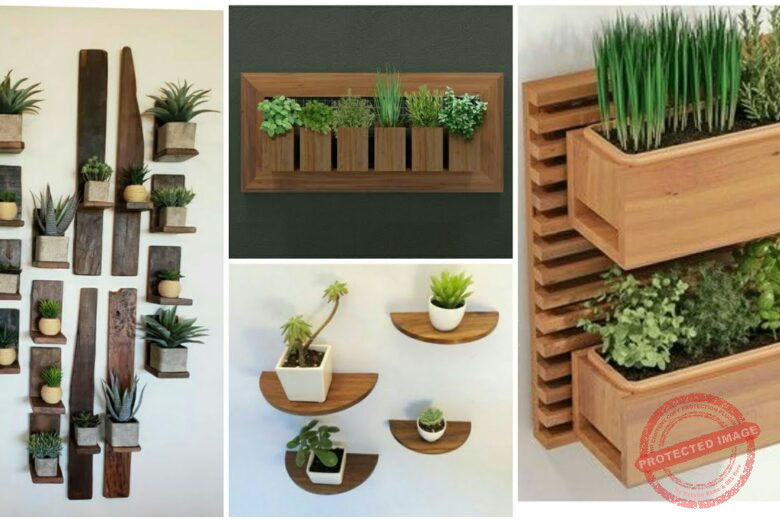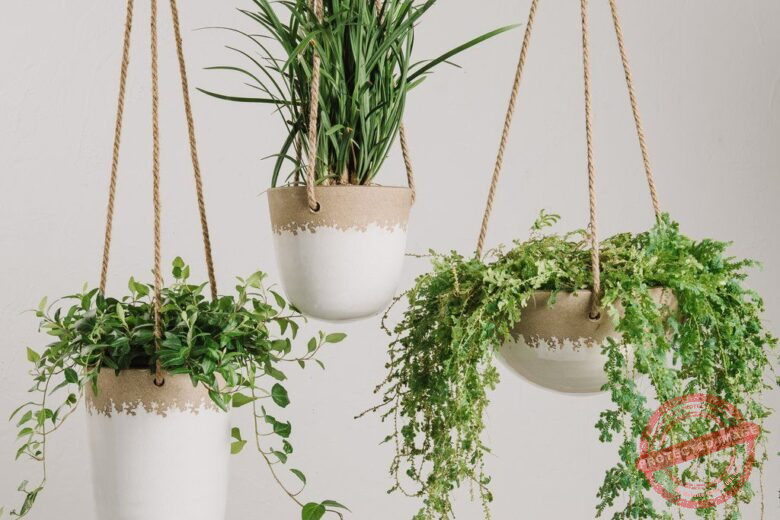Creating a thriving vegetable garden is a rewarding endeavor that allows you to enjoy fresh produce right from your backyard. In today’s digital age, there are numerous vegetable garden layout apps available to assist both novice and experienced gardeners in planning and organizing their garden spaces.
Some of the best vegetable garden layout apps you can use to map out your garden are garden planner pro, Veggie Garden Planner, Smart Gardener, Gardenize, Home Outside, and iScape. These apps will help you with a superb layout that you will definitely fall in love with as a pro-Gardner.
In this article, I have explored the top 15 vegetable garden layout apps, delving into their pros and cons while providing a comprehensive comparison to help you make an informed choice.
15 Best Vegetable Garden Layout App [2024 Gardner’s Rating]
Gardening has transcended traditional methods with the advent of technology, and vegetable garden layout apps have emerged as indispensable tools for garden enthusiasts. These apps offer convenience, guidance, and creativity when planning and organizing your garden layout. Let’s delve into the benefits of using these apps before exploring the top contenders.
Read Also: 50 Fastest Growing Vegetables and Fruits [2-9 Weeks]
1. Garden Planner Pro
First on the list of best garden layout app is Garden Planner Pro, this is a popular app that offers a user-friendly interface for planning and organizing your vegetable garden layout. It provides drag-and-drop functionality to arrange plants, pathways, and structures. The app allows you to customize garden shapes and sizes while providing recommendations based on your location and climate.
Pros:
- Intuitive drag-and-drop interface.
- Personalized recommendations based on location.
- Ability to customize garden shapes and sizes.
2. Veggie Garden Planner
Veggie Garden Planner is another super garden layout app for Gardner looking for free app that comes absolutely useful when planning your garden design. Veggie Garden Planner focuses on helping users create efficient and productive vegetable gardens. The app provides information on plant spacing, companion planting, and crop rotation. It’s particularly useful for those aiming for high yields in limited space.
Read Also: Can You Mix Potting Soil with Garden Soil?
Pros:
- Emphasis on maximizing productivity.
- Detailed information on plant spacing and companion planting.
3. Smart Gardener
Smart Gardener offers a comprehensive approach to gardening, including personalized garden plans, plant care reminders, and a plant database. The app considers your location, climate, and gardening goals to provide tailored recommendations.
Watch the Below Vidoe To Guide You On A Quick Way To Plan Your Garden
Pros:
- Personalized garden plans.
- Plant care reminders.
- Detailed plant database.
4. Gardenize
Gardenize is designed to help gardeners keep track of their plants and garden activities. It allows users to create digital garden journals, add photos, and record observations. This app is ideal for gardeners who want to document their gardening journey.
Read Also: Garden Soil vs. Potting Soil for Tomatoes: All You Need to Know
Pros:
- Digital garden journal with photo integration.
- Easy tracking of garden activities and observations.
5. Home Outside
Home Outside offers a range of tools for designing outdoor spaces, including vegetable gardens. It provides features for visualizing garden layouts and experimenting with various design elements.
Pros:
- Suitable for both garden and landscape design.
- Visualizing garden layouts with design elements.
6. Gro Garden
Gro Garden focuses on educating users about gardening through interactive gameplay. It’s designed for families and children to learn about planting, growing, and harvesting vegetables in a fun and engaging way.
Read Also: [Gardener’s Manual] Tomato Flower to Fruit Time Lapse
Pros:
- Educational and interactive gameplay for families and children.
- Learning gardening concepts through gamification.
7. Garden Squared
Garden Squared simplifies the garden planning process with a grid-based layout. It helps users allocate space efficiently by providing visual representation of each plant’s space requirement.
Read Also: [Beginner’s Guide] Planning Your Vegetable Garden Layout
Pros:
- Grid-based layout for efficient space allocation.
- Visual representation of plant spacing.
8. iScape
While primarily a landscape design app, iScape can also be used for planning vegetable gardens. It offers augmented reality features that allow users to visualize how their garden layout will look in the real world.
Read Also: 50 Suitable Crops for A Kitchen Garden
Pros:
- Augmented reality features for visualizing garden layouts in real world settings.
- Suitable for both landscape and vegetable garden design.
9. My Soil
My Soil is focused on providing soil information based on your location. It helps users understand their soil composition, which is crucial for successful gardening.
Pros:
- Provides valuable soil information based on location.
- Helps users understand soil composition for better gardening results.
10. Planter
Planter is an app that simplifies the process of planning and tracking your vegetable garden. It offers features for selecting plants, designing layouts, and managing care routines.
Read Also: Potting Soil vs. Topsoil: Understanding the Differences and Choosing the Right Option
Pros:
- Simplified planning and tracking of vegetable gardens.
- Features for plant selection, layout design, and care routines.
11. Garden Compass
Garden Compass is a comprehensive gardening app that offers plant identification, disease diagnosis, and care recommendations. It’s a valuable tool for gardeners seeking solutions to common gardening challenges.
Pros:
- Plant identification and disease diagnosis.
- Provides care recommendations for addressing gardening challenges.
12. GrowVeg
GrowVeg is a versatile app that assists in planning, designing, and managing vegetable gardens. It offers features for crop rotation, companion planting, and customizable garden layouts.
Pros:
- Crop rotation and companion planting features.
- Customizable garden layouts.
13. Landscaper’s Companion
Landscaper’s Companion is a plant and gardening reference app that provides detailed information about various plant species. While not exclusively for vegetable gardens, it’s a valuable resource for gardeners seeking plant information.
Pros:
- Detailed plant information for a wide range of species.
- Useful reference for gardeners seeking plant knowledge.
14. Sprout it
Sprout it is designed to guide users through the entire gardening process, from planning to harvest. It offers personalized care schedules, reminders, and a community feature for sharing gardening experiences.
Pros:
- Personalized care schedules and reminders.
- Community feature for sharing gardening experiences.
15. Seed Planter
Seed Planter is an app that focuses on helping users select the right plants for their garden. It offers information about various plant varieties, their growth requirements, and potential harvest yields.
Pros:
- Plant selection information for informed gardening choices.
- Provides details about plant varieties and their growth requirements.
Benefits of Using Garden Layout Apps
Garden layout apps bring a plethora of advantages to both novice and expert gardeners. They provide intuitive interfaces that allow you to visualize your garden’s layout before physically planting anything.
These apps offer features such as drag-and-drop functionality, plant databases, climate-specific recommendations, and even virtual reality simulations. Additionally, they can help you optimize space, track plant growth, set reminders for watering and fertilizing, and offer valuable insights into companion planting.
Garden Planner Online
A garden planner online is a powerful tool that allows you to design, plan, and visualize your garden layout using the convenience of the internet. With just a few clicks, you can create a detailed blueprint of your garden, selecting plant placements, pathways, and structures.
These online planners often offer a wide variety of plant options and design elements, enabling you to experiment with different layouts and arrangements before committing to your final design.
Vegetable Garden Layout Planner Free
A vegetable garden layout planner that’s free can be a valuable resource for both beginners and experienced gardeners. These tools provide a platform where you can input your garden dimensions and select from a range of vegetables to place within your garden space. The planner will often consider factors like spacing, companion planting, and sunlight requirements to help you create an optimized and productive layout.
Free Garden Planner App
A free garden planner app is a mobile application that brings the convenience of garden planning directly to your smartphone or tablet. These apps offer features similar to online planners but in a compact and accessible format. You can design your garden while on the go, making adjustments and tweaks as needed. Many free garden planner apps provide a user-friendly interface with drag-and-drop functionality, making it easy to arrange plants, pathways, and other elements.
Flower Garden Layout Planner Free
While vegetable gardens take center stage, flower gardens also hold their own charm. A free flower garden layout planner allows you to unleash your creativity and design stunning floral displays. You can experiment with color schemes, bloom times, and plant heights to create a garden that’s a visual delight throughout the seasons. Just like with vegetable garden planners, these tools consider factors like sunlight and spacing to ensure your flower garden thrives.
How Do I Design My Vegetable Garden Layout?
Designing a vegetable garden layout involves several key steps:
Choose a Location: Select a sunny spot with at least 6-8 hours of sunlight per day for your vegetable garden.
Measure and Plan: Measure the available space and create a rough sketch of your garden area. Consider pathways, structures, and any existing features.
Divide into Zones: Divide your garden into different zones based on the sunlight each area receives. Place taller plants on the north side to avoid shading smaller ones.
Plan for Crop Rotation: Avoid planting the same family of crops in the same spot each year to prevent soil depletion and pests. Plan a rotation schedule.
Companion Planting: Arrange plants that complement each other in terms of growth and pest control. For example, plant marigolds near tomatoes to deter pests.
Consider Height: Place taller plants where they won’t shade shorter ones. Trellises or cages can help manage climbing plants.
Utilize Vertical Space: Incorporate vertical gardening techniques to maximize space and create an aesthetically pleasing look.
Spacing: Follow recommended spacing guidelines for each plant to ensure they have enough room to grow.
Group Similar Plants: Group plants with similar water and nutrient needs together for efficient watering and care.
Add Paths and Borders: Plan pathways for easy access and consider adding decorative borders to define the garden beds.
Is There a Free Gardening App?
Yes, there are several free gardening apps available that cater to various gardening needs. These apps offer features such as plant identification, care guides, pest control advice, and even garden planning tools. Some popular options include “PlantSnap,” “GardenAnswers,” and “GardenTags.” While some apps offer in-app purchases for premium features, the free versions are often sufficient for basic gardening tasks.
What Is the Basic Layout of a Vegetable Garden?
The basic layout of a vegetable garden typically includes the following elements:
Raised Beds or Rows: Arrange your plants in raised beds or rows, which make it easier to manage and care for the plants.
Pathways: Create pathways between beds to allow easy access for planting, watering, and harvesting. Paths also help prevent soil compaction.
Companion Planting: Utilize companion planting techniques to maximize space and enhance plant health by placing compatible plants near each other.
Crop Rotation: Plan a rotation schedule to avoid planting the same crops in the same spot each year, preventing soil depletion and pest buildup.
Vertical Gardening: Incorporate trellises, cages, and supports for climbing plants like beans, cucumbers, and tomatoes to optimize space.
Watering and Irrigation: Design your layout with water sources in mind, ensuring easy and efficient watering.
Sunlight Considerations: Arrange taller plants on the north side of the garden to prevent shading of smaller plants.
How Do You Arrange Vegetables in a Raised Garden Bed?
Arranging vegetables in a raised garden bed involves thoughtful planning to optimize space and promote healthy growth:
Plan for Sunlight: Place taller plants on the northern side of the bed to prevent shading of smaller plants.
Vertical Gardening: Grow climbing plants like beans, peas, and cucumbers along the trellises to save space.
Consider Plant Height: Arrange plants by height, with taller plants at the back and shorter ones towards the front.
Spacing: Follow recommended spacing guidelines for each type of vegetable to ensure they have enough room to grow.
Companion Planting: Pair compatible plants together to enhance growth and deter pests naturally.
Crop Rotation: If you have multiple raised beds, plan a rotation schedule to prevent soil depletion and disease buildup.
Succession Planting: Plan for succession planting by sowing seeds or transplanting seedlings in stages for a continuous harvest.
Incorporating these techniques will help you create an organized and thriving vegetable garden in your raised beds.
Conclusion
Choosing the right vegetable garden layout app depends on your specific needs, preferences, and gardening goals. Each app mentioned above has its strengths and unique features that can enhance your gardening experience. Whether you’re a beginner looking for guidance or an experienced gardener seeking organization, there’s an app to suit your requirements.
It’s recommended to explore the features, read user reviews, and even try out free versions before making your final decision. With the help of these apps, you can plan, create, and maintain a thriving vegetable garden right at your fingertips.




2 Replies to “15 Best Vegetable Garden Layout App [2024 Gardner’s Rating]”